In Part 1 of this mini cutting board series we talked about the types of cutting board. There are generally 3 types, Wood/Bamboo, Plastic/Acrylic, and Glass. This post will discuss briefly how to clean the boards. Then in more depth we will look at how to oil a wood or bamboo cutting board. Maintanence for a cutting board is so easy. They better you care for them the longer they last. My favorite is the wood boards.. this round Mangoleaf Acacia Wood seen below. If I were to purchase another right now I'd probably get something lovely and rustic like this.
How to clean a cutting board:
Wood or Bamboo Cutting board:
For these, simply just rinse clean with dish soap and pat dry. Don’t soak or place in the dishwasher. The wood will absorb the excess water and dry, then when it dries will crack and sometimes warp. You should also oil them every few weeks using a food grade mineral oil. (See below)
Plastic or Acrylic Cutting board:
These can be scrubbed, bleached, and soaked as long as you want! In fact it is recommended! Even though plastic isn’t a porous surface like wood, little cut marks and crevasses develop in the surface after cutting. Bacteria has no problem hiding deep in those. Most board are probably washer safe, but I would refer to the manufacturing labels. You don’t want a gooey melted board.
... on a side note. When those creases get so deep and the board is looking pretty hashed, it's either time to replace it. I have even heard from a chef friend that they can be sanded down. In the food industry, they litterally take the big plastic boards out back and sand them down! I don't know much about that but thought I would mention that there is another option for plastic boards and making them last longer! Kinda interesting.
Glass Cutting Board:
Same as plastics, but they can be bleached as well. They are hard and nonporous so no where for little bugs and proteins to hide. Very sanitary. But as I mentioned in the previous post… just try and steer away from glass! They are horrible for your knives!! You will destroy them on your quest to be clean.
How to oil a wood or bamboo cutting board:
If you are like me and choose wood cutting boards for the sake of your knives, you know that there is a little upkeep required. You might think that oiling your board is high maintenance, and yes it might be more than a plastic but the benefit on my knife set is worth it. And oiling is simple! (just fyi, I love a good plastic board as well.)
The oil you want is mineral oil. You can buy it specifically for wood and bamboo like this bottle. Don’t try using regular household cooking oils. Those will turn rancid and leave a bad taste to the food you cut on the board. A bottle of wood oil like this is inexpensive and lasts a long time. To oil your wood cutting board just pour a little oil on the wood, and massage it into the grains. Apply a little more until the wood stops absorbing the oil. Do this to all surfaces. Wipe off excess and allow to air dry over night. This can be done to wood and bamboo boards. (Even the sides should get a little rub down, they need it too)
Oiling helps to prevent the wood from drying out and cracking. You can see the little fissures in the bamboo board above. I had another bamboo board that I neglected so long that it eventually broke apart at the cracks. Oiling also helps to maintain a nice rich color to the board. Have you ever noticed that after the first or second time using a wood board it seems to fade? Rub a little oil on it to bring back that color.
You can see in these two pictures, the right half is oiled and the left half is not.. what a difference in the look! Not to mention the general health of the board. Oiling only needs to be done every 1-2 weeks with regular use. I'll rub a little only on after wiping it clean when I am wrapping up the rest of my dishes and prop it up on the side of the counter to dry over night. Seriously so easy.
Oiling can also be done to other wood product such as spoons. Most wood bowls or platters will have a protective coating on them so it isn’t necessary. But those coatings can’t be placed on a board, the cutting would ruin it and defeat the purpose. I did buy a gorgeous large wood spoon and noticed it fade after the first use. This was my clue that it lacked any coating and needed oil. The grains soaked up the oil and the dark wood came back to life. And it only took me maybe a minute. Easy and totally worth it to save my wood.
I think sometime I'm going to have to talk knives... chopping is one of my favorite things in the kitchen and a good cutting board knife combo is essential! But that is for another day.
Click here to read Cutting Boards Part 1: What is the best material for a cutting board


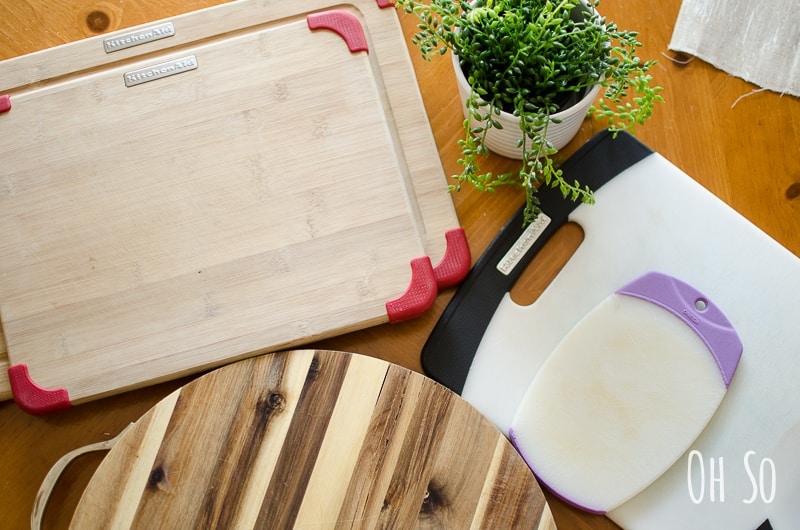
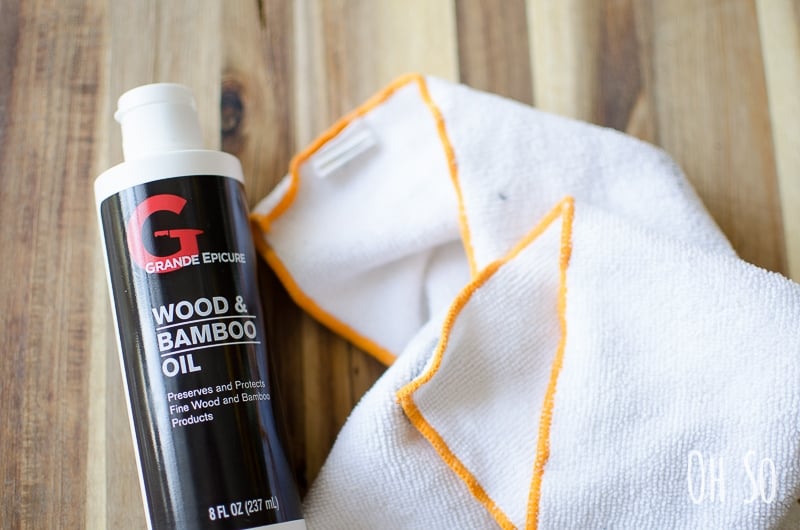
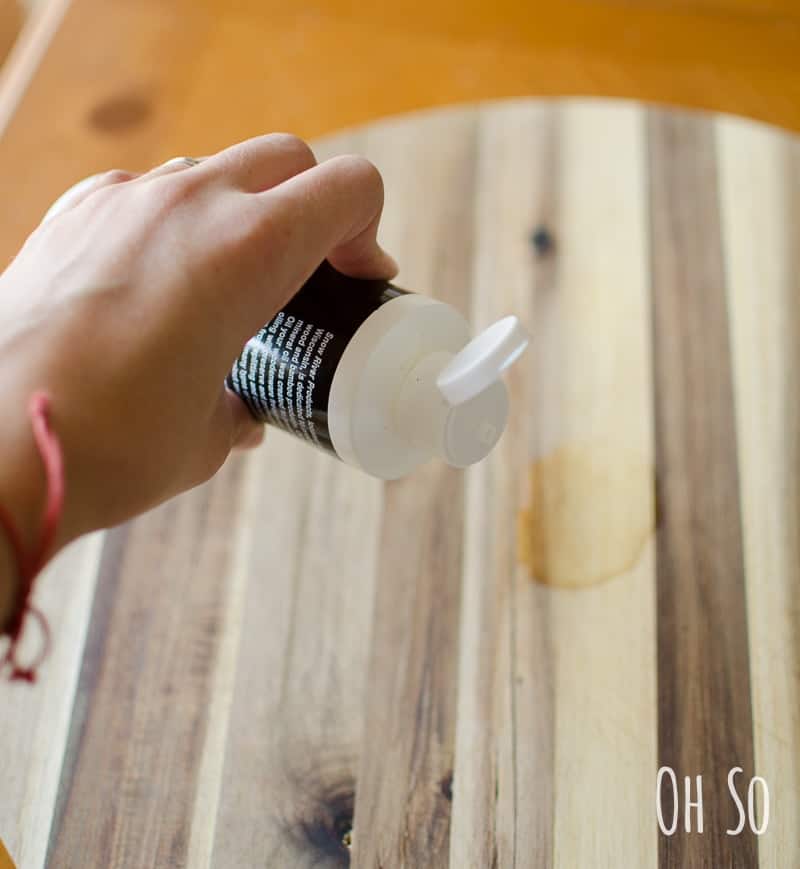
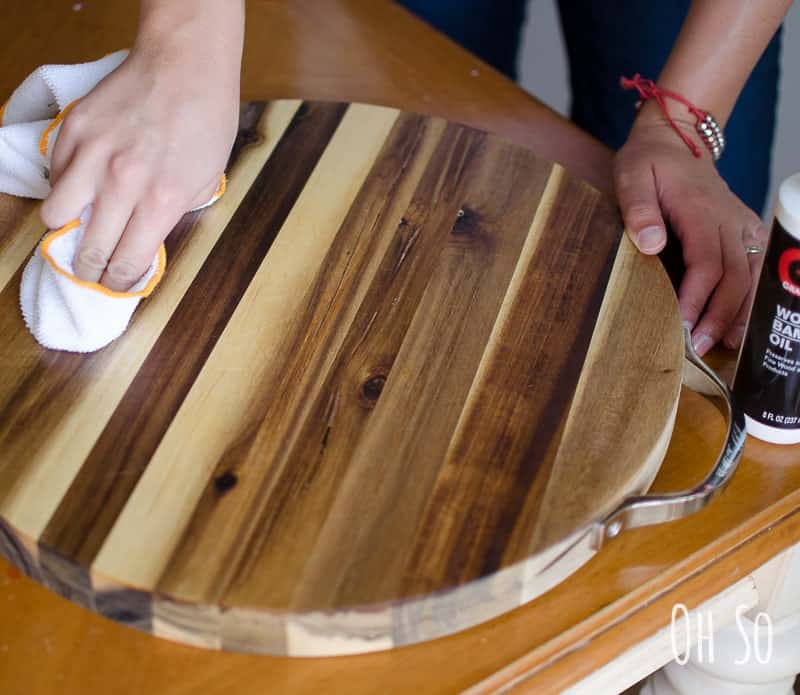
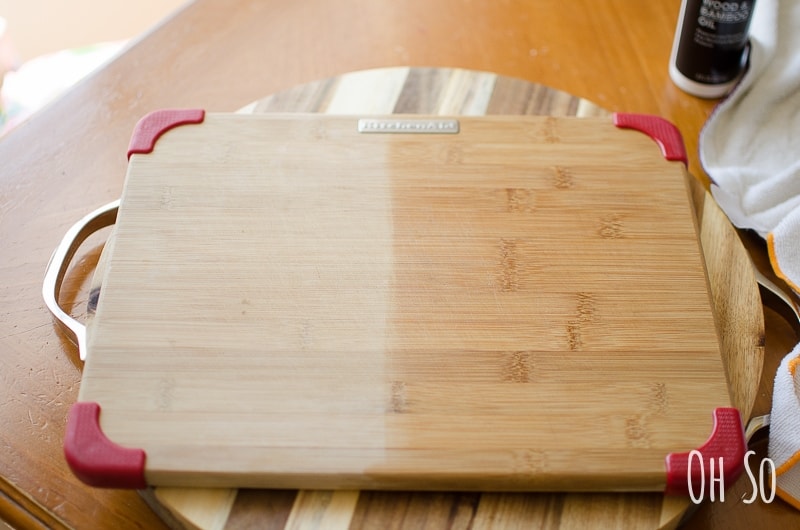
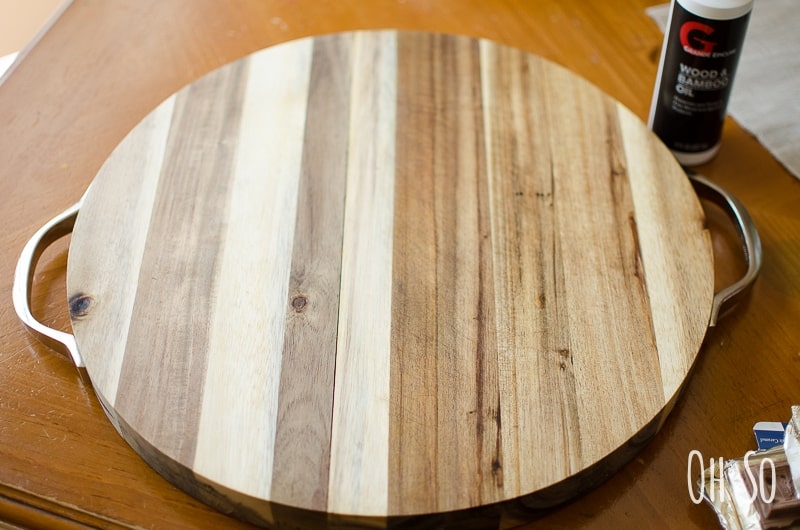
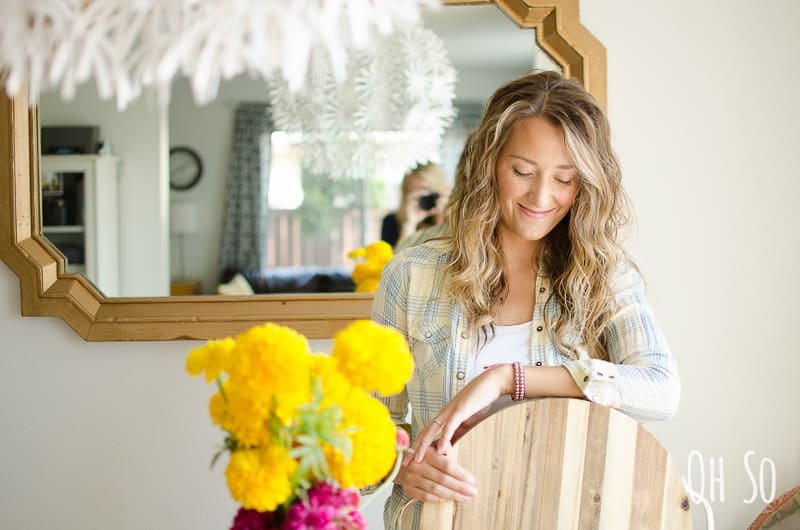
Kathy says
I have a large wood cutting board that I've had for over 20 years. I never oiled it, but I'm going to do that now. I just purchased an acacia board and wanted to clean it before using it and came across your site. Thank you for sharing your information. BTW, my first board -- the one that has lasted forever -- has always been used for working with dough -- breads and cookies. I bring that board out and the guys know I'm going to do some baking. I can't wait to try out my new board (after I clean and oil it).
alice says
Hi AUBREY ,
thanks for sharing, and I highly recommend the acacia wood cutting board from ironwood gourmet,
http://ironwoodgourmet.com
which is great quality and protected my knife sharp. Long lasting life, which I have it over 2 years already, and still looks brand new
best regards
Alice